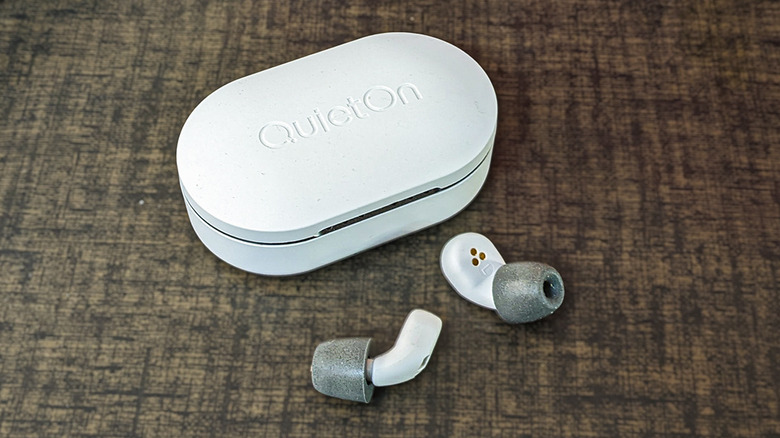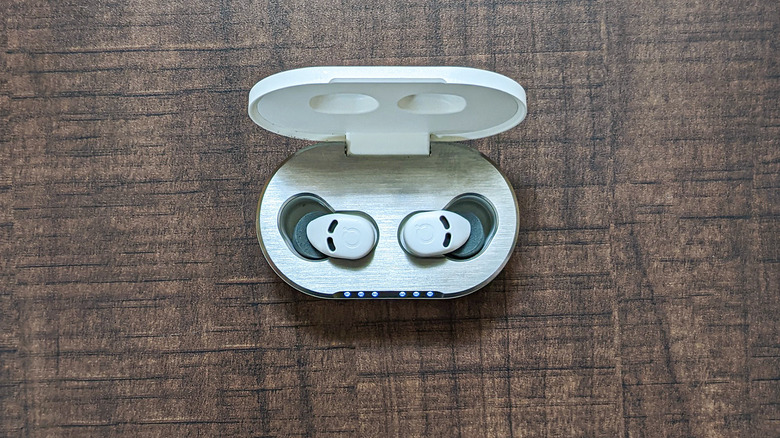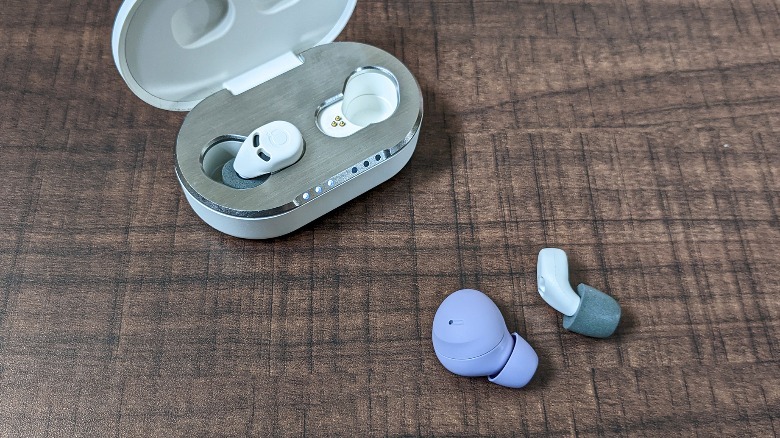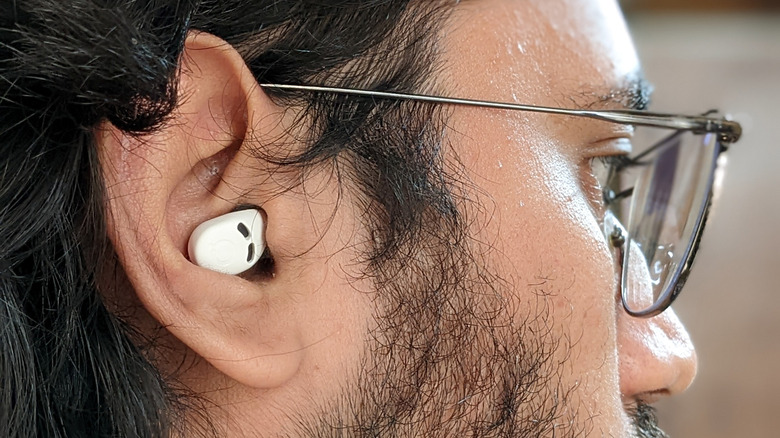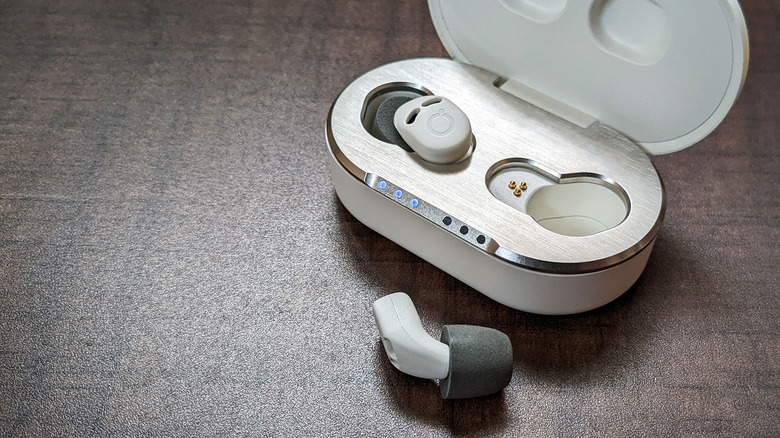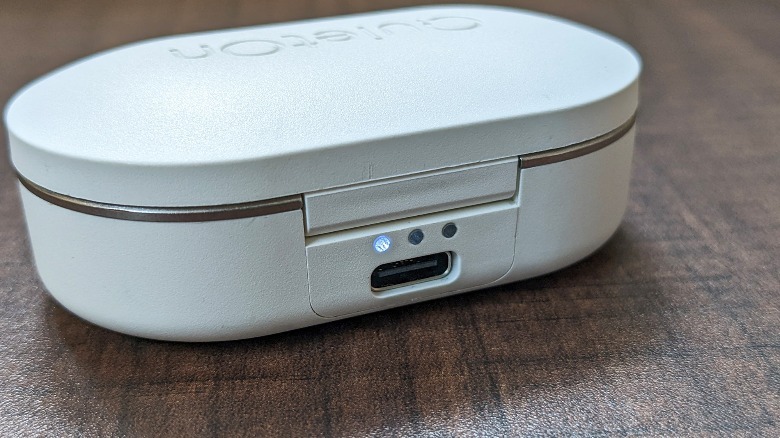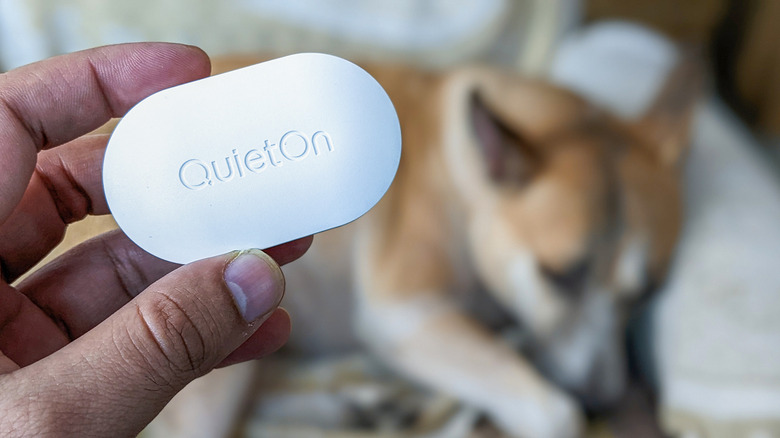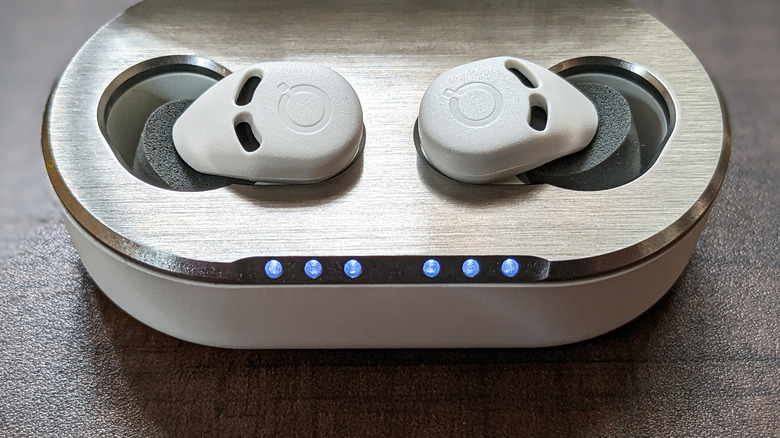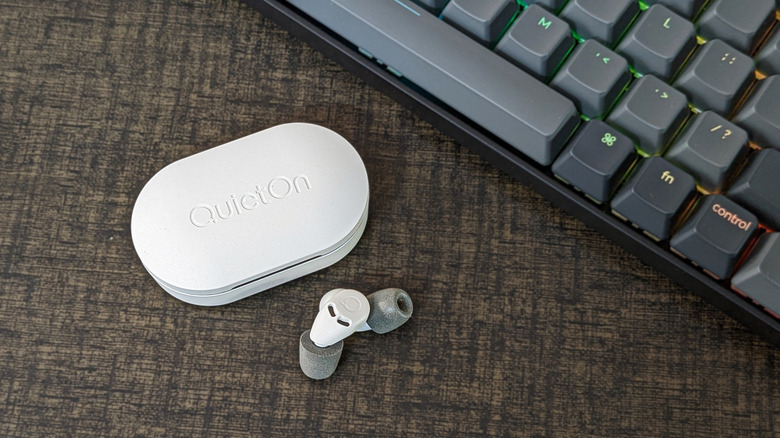QuietOn 3.1 Review: Reclaiming Lost Sleep With ANC Earbuds
- Lightweight
- Simple plug-and-play utility
- Effective Active Noise Cancellation (ANC)
- Long battery life
- Not made for media audio
- Changing noise cancelation mode janky
Like most other millennials, I have trouble falling and staying asleep. While our incessant use of gadgets is at least partially to blame for that failure, technology can also assist alleviate it. We've been using gadgets that tell us we're not sleeping well for a while now – it would seem that it's finally time that we get gadgets that lend a hand in allowing us to get good rest. Finnish company QuietOn wants to address endemic insomnia through silence, and its recently-introduced QuietOn 3.1 earbuds aim to provide you with a noise-free slumber through active noise canceling (ANC).
The human brain makes most of its growth and recovery while sleeping, which is why good and healthy sleep remains a prime focus for most of humanity. Over $400 billion is already spent on sleeping aids, and the market for sleep tech (technology for better sleep) is already witnessing a boom. Despite plenty of smart beds and mattresses that promise to help you achieve those golden eight hours of sleep, wearables make up nearly 75% of the total sleep-improving gadgets sold in 2020. As intrusive gadgets erode our desire to wind down, the industry is expected to grow further and clock sales worth $17 billion in North America alone.
While companies have been exploring ways to make you more comfortable at night, QuietOn is banking on silence for a good night's sleep. Research shows silence has numerous benefits and can help improve our cognitive abilities, reduce stress, and enrich sleep quality. QuietOn 3.1 earbuds work by canceling out background noise. But unlike some other sleep-aiding earbuds, such as the Bose Sleepbuds II and Amazfit ZenBuds, they do not play any audio.
So, is a quiet environment enough to help you fall asleep? We intend to answer that in this review. But before we do, here are details about the design and build quality of these earbuds and whether they justify the price of $289 (and €259 in markets throughout Europe).
Build and Design
The design of the QuietOn 3.1 is bland and unglamorous. The outer shell of the carrying case is made of hard plastic. The company's logo is engraved on top and printed on another label at the bottom. You can recognize the top side of the carrying case by feeling the engraving in darkness or without looking. Overall, the case doesn't leave you with a great first impression; the lack of finesse might make you wonder if you overspent.
Flipping the case open reveals the cradle where the two earbuds are seated, topped with a thick layer of metal. This metal surface gives the cradle a more premium appeal and saves it from being perceived as cheap. The metal plate also has cutouts for LEDs that indicate the level of battery remaining in each earbud; these are essential because there is no app to control the earbuds.
Three more LEDs on the back of the case indicate its battery level. Underneath the LEDs, we find a USB Type-C port used for charging the case. Meanwhile, the hinge that holds the case's door is quite loose and lacks that plush feeling of the slow-closing hinges we see on several earbuds cases in this price bracket.
Inside, the two earbuds sit inside their respective slots, slightly raised because of pogo pin connectors that push them upwards. The earbuds are considerably smaller than a conventional earbud from a pair of truly wireless stereo (TWS) earphones such as the Samsung Galaxy Buds 2 Pro. Each of them has the letter "Q" engraved and two large openings under which the noise-gauging microphone is placed.
Lifting the earbuds for the first time is a pleasant surprise; each earbud weighs barely 2 grams (approximately 0.07 oz). At the other end, the earbuds use memory foam eartips. Unlike traditional silicone eartips, these foam tips are highly supple and will easily mold with the shape of your ear canal, providing optimal noise isolation. QuietOn doesn't mention whether these are from Comply, the leading brand selling memory foam eartips, or any other company. Besides the pair of pre-applied eartips, you also get three more pairs in small, medium, and large sizes, allowing you to choose one that fits the best.
The same plastic surface continues on the earbuds. Thankfully, the two cutouts make them resemble alien faces, which is a saving grace. I would have preferred a more refined — probably a soft-touch material — instead of the grainy and textured plastic.
Despite this material, the lightweight build and the compact design hint at great comfort from using these earphones.
Fit and Comfort
The cushiony foam tips ensure the QuietOn earbuds fit perfectly inside your ear canal. For the optimal fit, the company recommends you thrust the earbuds as far inside the ear as they can go and then twist them to lock them against the antitragus of your ear. After being slotted inside the ear, the ear tip expands to ensure that outside noise does not creep through.
When in place, the earbuds simply hide from a straight line of sight instead of popping out of the ear. The small size allows the earbuds to stay tucked inside and not pop out of the ear at night, especially for those who like sleeping on the side. This remedies one of the biggest pain points with truly wireless earbuds, such as the Apple AirPods Pro, wherein you wake up in the middle of the night to realize that either one or both of the earbuds have fallen off the ear and are lost in the unseen abyss between the sheets and the pillows.
I have used the QuietOn earbuds for more than 10 nights and have rarely encountered this issue where they fall out of the ear. Besides that, the compactness of each of the buds lets you sleep peacefully without the burden of waking up with a sore ear. The snug fit ensures a wonderful experience wearing these earbuds while relaxing or sleeping.
If QuietOn 3.1 earbuds were to be rated based on just the feeling inside the ear, they would score highly. However, that is not the case, and we must consider other aspects, such as their utility and how effective they are at what they claim to do: help you sleep faster and stay asleep.
Functionality
As mentioned previously, unlike other similar sleeping aids, such as the Bose Sleepbuds II, the QuietOn 3.1 earbuds cannot play audio; they simply cancel out background noise to help you achieve restful sleep. Like any other pair of noise-canceling earphones, the microphone senses the background noise and produces inverted sound waves that cancel out that noise.
The QuietOn 3.1 do not require a smartphone to pair; they jump into action right when you pull them out of their charging cradle. Each earbud functions independently to perceive background noise for roughly 20 seconds. When each of them is done detecting external audio, the noise cancelation activates, jamming out most of the disturbances from outside.
Since these earphones don't connect to a smartphone or play any audio, there is no companion app to control the intensity or switch between different modes of ANC. This function is rather mechanical, and you must hover the case close to the ear with the QuietOn engraving facing the ear to reactivate transparency mode. A magnet in the case interacts with earbuds to disable ANC and reset them to the noise-sensing state. Once 20 seconds elapse, the earbuds usher back into the ANC mode based on the noise profile captured this time.
Unfortunately, because of the lack of simple smart quirks, the earbuds remain active, and continuously consume battery, even when you take them out of the ear.
When it comes to assessing the remaining battery capacity on the earbuds and the case, there are three sets of three LEDs each to indicate battery levels. The two sets of three LEDs at the top of the case indicate the battery capacity (divided into three steps — presumably full, medium, and low) when the lid is opened. When the lid is shut again, the LEDs on the case's rear end show its battery level.
While this can be annoying initially, the feature is useful if you prefer to keep your phone away while resting. You don't need to look at any screen to know the status of the battery, and the earbuds work only in on or off states with simple analog controls.
But do they work as advertised?
Effectiveness
The QuietOn earbuds primarily work to cancel out noise in low and mid-range frequencies, such as humming sounds from electric appliances, snoring, or speaking people, while being relatively permissive with high-frequency sounds such as alarms.
The actual noise canceling abilities of the earbuds are fairly convincing and on par with — and sometimes even better than — the AirPods Pro (1st Gen) and the Galaxy Buds 2 Pro. So whether it's a janky fan, air conditioner, or a noisy party animal of a neighbor, the QuietOn earbuds will effectively cut those sounds out to a great deal. If they still feel lacking, you can bring the case close to the earbuds and let them analyze the noise profile again for them to work more accurately.
The earbuds can tone down dull yet vexing sounds coming from outside very well. They are also effective in combating snoring but do not shut them out completely. Thankfully, our brains are very competent at ignoring noise when we are asleep but not so much when we are trying to sleep, which brings me to one disadvantage with these earbuds.
On nights when you are tired enough to fall asleep quickly, the QuietOn 3.1 earbuds will assist you in dozing off faster. But the same may not always hold when you aren't feeling sleepy. While silence can be calming, it may not always be the best solution to quiet a ceaseless inner monologue.
I found the QuietOn 3.1 earbuds especially aggravating my anxiety, which could otherwise be relieved by white noise, binaural beats, or guided meditations if the earbuds allowed sound output. In such scenarios, I found myself reaching out to my regular Bluetooth earbuds and ditching the QuietOn ones.
Although other solutions, such as the Bose Sleepbuds II, do not offer the ability to play just anything, you can play sounds from a library of white noises, like the sounds of an ocean or those of a busy office. This feature is dearly missed on the QuietOn earbuds.
Battery and Charging
One area, other than the comfort of wearing them for a really long duration, where the QuietOn 3.1 earbuds excel is in terms of battery life. The company claims each earbud to last 28 hours, with the case adding another week of backup. Compared to regular truly wireless earbuds, these figures are phenomenal.
In daily usage, I could deploy the QuietOn 3.1 earbuds for six nights straight — and several clamorous hours during the day without having to seek a charger. Even after six nights and those cumulative hours over the days, the case had one of the three LEDs still shining. I'm not sure if that implies the battery at 33% or lower, but it was assuring. This is lower than QuietOn's claim of over eight days of total battery backup, but I still hold it as commendable.
When it was time to charge the case finally, I could juice it up in less than two hours, which again is good for any earphones of comparable caliber. The earbuds, however, lack any support for wireless charging, and that can be tormenting if you are already trying to abstain from using wires.
Conclusion
The QuietOn 3.1 earbuds take an unusual approach with these earbuds by abandoning any kind of audio playback. But on the positive side, this helps the company make these earphones incredibly light and easy to wear without being bothered. The active noise canceling (ANC) on these earphones is top-notch and will easily cut out disturbing sounds that may interrupt your sleep.
Besides the lack of audio playback, another concern I have about these earphones is the price. Despite their unimpressive build quality, the QuietOn 3.1 earbuds cost $289 in the U.S. or €259 in the European Union. At this price, they clash head-on with the Bose Sleepbuds II, which come in at $249. Notably, the Bose earbuds offer noise-masking instead of active noise cancelation, and the experience may depend on your state of mind and the then-current affinity for background noise.
Then, for roughly half the price, you can also get Amazfit ZenBuds, which also offer noise-masking and not noise cancelation. However, these earbuds can also track different stages of your sleep to offer a more holistic view of your slumber.
So, the bottom line is that if you live in a noisy environment — or have a lifestyle that requires you to sleep at unusual places — like your workplace, airport, or on a ship, the QuietOn 3.1 earbuds are great for sleeping or even meditating. If, however, you have plenty of silence already, you might be better off with a pair of noise-canceling earbuds that can also play audio through your smartphone, so you aren't irked by too much silence.
